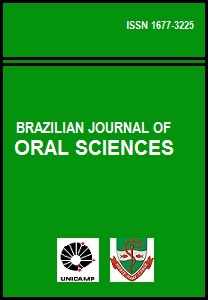Abstract
Evidence-based dentistry is an emerging perspective to insure that the best available research evidence is integrated in clinical practice for the maximal benefit of each individual patient. It is focused on identifying the statistically and clinically significant findings from randomized trials. The successful practice of dentistry relies on a vast spectrum of dental research, which ranges from materials research to observational studies. This is particularly true in the domain of endodontics. Therefore, there is a need to expand the traditional domain of evidence-based dentistry to materials research.Here, we describe an approach to obtain a preliminary systematic review of the research literature on the efficacy and efficiency of mineral trioxide aggregate (MTA) for sealing and repairing furcal perforations. Examination of the pertinent MTA literature identified eight journal articles that met fundamental criteria of published research studies of efficacy of MTA over other materials for use as a furcation repair material. Taken together, seven among these reports (88%) were found to generate evidence that could be considered reliable and acceptable from the viewpoint of evidence-based (EB) endodontic dental practice. A critical synthesis of this evidence is discussed.References
Seidel-Bittke D. Evidence-based dentistry: How to use it. Dent Today. 2003, 22: 50-55.
Chiappelli F, Prolo P. Evidence-Based Dentistry and Translational Research. J Evid Based Dent Pract. 2003; 3: 5-7.
Jadad AR, Moore RA, Carroll D, Jenkinson C, Reynolds DJ, Gavaghan DJ, McQuay HJ. Assessing the quality of reports of randomized clinical trials: is blinding necessary? Control Clin Trials. 1996; 17: 1-12.
Jadad AR. Evidence-based decision making and asthma in the internet age: the tools of the trade. Allergy. 2002; 57 Suppl.74: 15-22.
Chiappelli F, Prolo P. Evidence based dentistry for the 21st Century. Gen Dent. 2002; 50: 270-73.
Forrest JL. Enhancing your practice through evidence-based decision making: Finding the best clinical evidence. J Evid Based Dent Pract. 2001; 1: 277-86.
Chiappelli F, Concepcion E, Sunga E, Prolo P. Cross-cultural implications of evidence based dentistry. Braz J Oral Sci. 2002; 1: 47-53.
Chiappelli F, Prolo P, Newman M, Cruz M, Sunga E, Concepcion E, Edgerton M. Evidence-based dentistry: benefit or hindrance. J Dent Res. 2003; 82: 6-7.
Needleman, I. Is this good research? Look for CONSORT and QUORUM. Evid Based Dent. 2000; 2: 61-2.
Chiappelli F, Concepcion C, Ibarra A, Sunga E, Wong J, Prolo P. Evidence Based Dentistry: Making Decisions when the Evidence is Mixed. AADR-IADR. 31st Annual Meeting,San Antonio, TX; March 12-15; 2003.
Timmer A, Sutherland LR, Hilsden RJ. Development and evaluation of a quality score for abstracts. BMC Med Res Methodol. 2003; 3: 2. URL: http://www.biomedcentral.com/1471-2288/3/2.
Ramos KD, Schafer S, Tracz SM. Validation of the Fresno test of competence in evidence based medicine. Br Med J. 2003; 326: 319-21.
Rand Evidence/Technology Report # 40, Mind-Body interventions for gastrointestinal conditions. PI: Ian Coulter (Chiappelli F, special consultant and reviewer).
AHRQ Publication # 01-E030; 2001 14. Astin JA, Ernst E. The effectiveness of spinal manipulation for the treatment of headache disorders: a systematic review of randomized clinical trials. Cephalalgia. 2002; 22: 617-23.
Montgomery D.C. Introduction to statistical quality control. 4th ed. New York, NY: Wiley; 2000.
The Brazilian Journal of Oral Sciences uses the Creative Commons license (CC), thus preserving the integrity of the articles in an open access environment.

